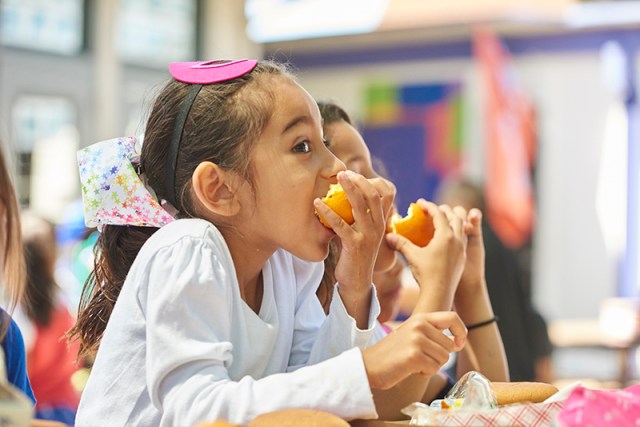As a pediatrician, I know that one of the most powerful tools for ensuring the health of my patients and of all our nation’s children is nutritious food. As such, school lunch, in particular, is vital not only to their health but also their learning capacity.
The Trump administration has recently proposed changes to the federal Supplemental Nutrition Assistance Program (SNAP). Nearly a million students may lose automatic eligibility for free school lunches under the administration’s proposal. If this proposal goes into effect, these children—many of whom depend on school meals for daily nutrition—will be hungry at home and in school and therefore unlikely to reach their greatest potential.
For millions of Americans, particularly those in lower-income communities, access to healthy foods remains a challenge. Across the nation, many families rely on the National School Lunch Program (NSLP) and the Child and Adult Care Food Program (CACFP) to nourish their children. Without access to high-quality, healthy foods and nutrition education, children within these communities are not only unable to perform their best in the classroom but are also at high risk for preventable diseases, like diabetes and obesity.
Recent studies confirm what I see in my practice: nutritious school meals lead to improved health and academic outcomes. Access to nutrition that incorporates protein, carbohydrates, and glucose has been shown to improve students’ cognition, concentration and energy levels. And according to a recent paper published by UC Berkeley, students at schools that contract with a healthier school-lunch provider perform better on tests. Additionally, a new impact study by KKS Advisors, commissioned by the W.K. Kellogg Foundation, found schools that serve Revolution Foods saw an improvement of 13.1% in English Language Arts (ELA) test results. The bottom line is students who have access to healthier food at school perform better. Luckily, companies like Revolution Foods, which serve freshly prepared, healthy meals to students in schools nationwide including right here in the Bay Area, and other mission-driven organizations across the U.S. are empowering students to make smart food and lifestyle choices.
A colleague of mine recently saw a teenage patient who just immigrated and was severely underweight. She just didn’t have access to enough food. She couldn’t eat breakfast before coming to school because she had to take care of her younger brother and get him to daycare. Without her school breakfast and lunch programs, she would have eaten only one meal each day. With the support of these incredible meal programs, she was able to attain a normal weight. When it was time to apply to high schools, she was accepted into one of the best in the city.
As a pediatrician, I cannot do all of the work required to ensure the health of our children. Most of the building blocks for health and academic success are put in place outside of my office. Sadly though, in this wealthiest of nations, many families are unable to provide the healthy food that our children need to succeed. This combined with recent government rollbacks on school nutrition standards that have already affected the quality of meals served in schools threatens the wellbeing of our youth. If the proposed changes to SNAP are enacted, it could further jeopardize the health and success of our children and our nation.
With healthy meal programs at a crossroads, it’s crucial for lawmakers and parents to recognize the great strides we are making as a culture by providing greater access to healthy foods, such as enlisting the support of healthy school and community meal providers. After all, growing healthy minds begins with fueling healthy bodies. We can build a brighter future for our nation’s youth and families by challenging our government when they take away food supports and water down nutritional guidelines, and by impelling schools to ensure that the school lunches they do provide are as nutritious as possible.











